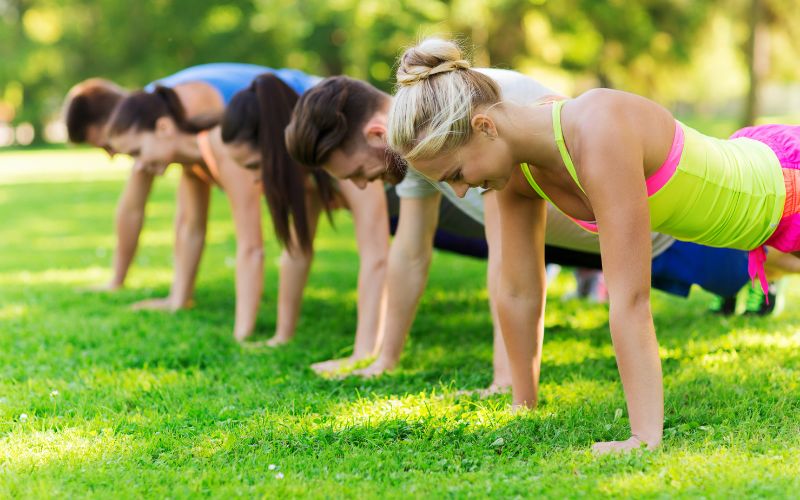According to a study published in the Journal of Back and Musculoskeletal Rehabilitation, nearly 40% of teenagers have poor posture. In this article, we will discuss the causes of poor posture and ways to improve teenage posture.
Causes of Poor Posture Among Teenagers
Several factors contribute to poor posture among teenagers, including:
Excessive Use of Technology
Teenagers spend a significant amount of time using digital devices such as smartphones, tablets, and computers. This leads to a sedentary lifestyle and can cause neck, shoulder, and back pain. According to a survey by the Pew Research Center, 95% of teenagers have access to a smartphone, and 45% of teenagers are online almost constantly.
Lack of Physical Activity
Many teenagers do not engage in regular physical activity, which can lead to weak muscles and poor posture. According to the Centers for Disease Control and Prevention, only 24% of teenagers meet the recommended guidelines for physical activity.
Poor Sleeping Habits
Poor sleeping habits, such as sleeping on a soft mattress or using a pillow that does not provide proper support, can lead to poor posture. According to a study published in the Journal of Chiropractic Medicine, sleeping on a soft mattress can cause a deviation of the spine.
Ergonomic Issues
Poor posture can also be caused by ergonomic issues such as using an uncomfortable chair or desk. According to a study by the American Academy of Pediatrics, ergonomic problems are a leading cause of musculoskeletal pain in teenagers.
Ways to Improve Teenage Posture
Regular Exercise
Regular exercise is essential for improving posture and overall health. It helps strengthen the muscles, improve flexibility, and reduce the risk of injury. The Centers for Disease Control and Prevention recommends at least 60 minutes of moderate-to-vigorous physical activity per day for teenagers.
Ergonomic Furniture
Using ergonomic furniture, such as an adjustable chair and desk, can help improve posture and reduce the risk of musculoskeletal pain. The American Chiropractic Association recommends using a chair with good lumbar support and adjustable height.
Stretching and Yoga
Stretching and yoga can help improve flexibility and reduce tension in the muscles, which can improve posture. The American College of Sports Medicine recommends stretching all major muscle groups at least two times a week.
Proper Sleep Habits
Proper sleep habits are essential for maintaining good posture. It’s important to get at least 7-8 hours of sleep each night, as it helps the body to relax and rejuvenate. It’s also important to maintain a good sleeping posture by using a supportive pillow and mattress.
Maintaining Good Posture While Standing and Walking
Maintaining good posture while standing and walking is also essential. It’s important to keep your shoulders back, your head up, and your spine straight. Avoid slouching or leaning to one side, and make sure to distribute your weight evenly on both feet.
Benefits of Good Posture
Good posture has several benefits for both physical and mental health. It helps prevent pain and discomfort in the neck, shoulders, and back. It also reduces the risk of injury and improves overall flexibility and range of motion.
Good posture also has mental health benefits. It helps boost confidence and self-esteem, reduces stress and anxiety, and improves mood and energy levels.
Resources for Improving Teenage Posture
Several resources are available for improving teenage posture, including:
National Institute of Arthritis and Musculoskeletal and Skin Diseases
The National Institute of Arthritis and Musculoskeletal and Skin Diseases provides information on posture and ways to improve it. They offer tips on how to sit, stand, and walk with good posture, as well as exercises to improve posture.
American Chiropractic Association
The American Chiropractic Association provides information on ergonomic furniture and how it can improve posture. They also offer tips on how to maintain good posture while sitting, standing, and walking.
Yoga Alliance
The Yoga Alliance offers resources on yoga and how it can help improve posture. They provide information on different yoga poses that can help improve flexibility and reduce tension in the muscles.
American College of Sports Medicine
The American College of Sports Medicine provides information on the benefits of exercise and how it can improve posture. They offer guidelines on how much exercise teenagers should get and what types of exercise are most beneficial.
FAQ
Yes, poor posture can cause permanent damage to the spine, muscles, and nerves.
Yes, it’s possible to improve posture at any age through regular exercise and ergonomic practices.
Yes, excessive use of technology can lead to poor posture and musculoskeletal pain.
The Centers for Disease Control and Prevention recommends at least 60 minutes of moderate-to-vigorous physical activity per day for teenagers.
Good posture can prevent pain and discomfort, reduce the risk of injury, and improve overall flexibility and range of motion. It also has mental health benefits, such as reducing stress and improving mood and energy levels.








